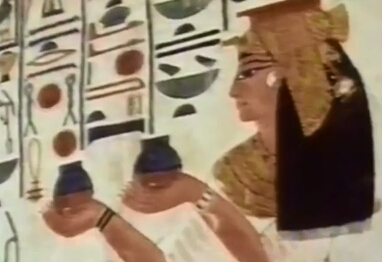Who did these knees belong to? That's a question scientists have been trying to figure out for decades.
這些膝蓋骨屬于誰的?這是科學(xué)家們幾十年來一直在努力解決的一個(gè)問題。
And according to a new study, they might have finally found the answer.
根據(jù)一項(xiàng)新的研究,他們可能終于找到了答案。
The mummified leg bones were first discovered in 1904 inside Queen Nefertari's royal tomb in Egypt. Archaeologists had always assumed they were the queen's, and new evidence suggests that might actually be the case.
1904年,在埃及女王納菲爾塔莉的皇家陵墓內(nèi)首次發(fā)現(xiàn)木乃伊化腿骨。考古學(xué)家們一直認(rèn)為這些骨頭是女王的,新的證據(jù)表明,可能實(shí)際情況是這樣的。

A team of researchers conducted a thorough study of the bones, including X-rays, radiocarbon dating, chemical analysis and more.
一個(gè)研究小組對(duì)骨頭進(jìn)行了深入研究,包括X射線、放射性碳年代測(cè)定,化學(xué)分析等等。
They determined that the legs' owner was a woman who was about 5 feet, 4 inches tall, had mild arthritis and died somewhere between the ages of 40 and 60 years old.
他們確定,腿骨的主人是一位女性,大約5英尺4英寸高,有輕度關(guān)節(jié)炎,并在40歲到60歲間的某個(gè)年齡段死亡。
And one of the researchers told The Guardian the careful way the bones were mummified suggests the body belonged to someone very important.
其中的一名研究員告訴衛(wèi)報(bào)記者,骨頭被木乃伊化的謹(jǐn)慎方式表明主人生前地位很重要。
There's no way to know for sure if the mummified knees did belong to Queen Nefertari. But after all of the tests were completed, the research team determined that the identification is "highly likely."
目前沒有辦法能確切認(rèn)定這些木乃伊膝蓋屬于納菲爾塔莉女王。但在所有的測(cè)試完成后,研究小組確定鑒定是“非常有可能的。”
譯文屬可可原創(chuàng),僅供學(xué)習(xí)交流使用,未經(jīng)許可請(qǐng)勿轉(zhuǎn)載。











